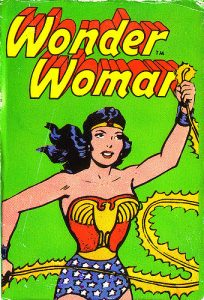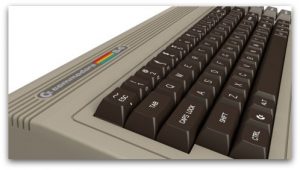That “first foray into fiction” I mentioned at the end of “Tools of the Trade, part iii” didn’t start out in a literary vein. It started out as a daydream.
People daydream about movie stars, about living the good life, about wreaking righteous vengeance on the neighbor’s yapping dog …
My daydreams were initially extensions of my main fun in life: playing pretend. When I wasn’t running around pretending to be a pirate, a cowboy, or the little girl from South Pacific who sings “Dites-Moi,” I was making up stories about them. Well, “stories” is a stretch. My daydreams were brief adventure scenes or scene-sequences featuring characters from the books I was reading, films I’d seen, or shows I was watching on TV.
As the years passed, Zorro, Robin Hood, Beth (from Little Women), Ivanhoe, Little Joe (from Bonanza), Tarzan, James Bond, Trixie Belden, Horatio Hornblower, Wonder Woman, The Man With No Name (Clint Eastwood’s spaghetti-western anti-hero), Sinbad the Sailor, and many many more intrepid characters morphed into alternate versions of themselves — because the daydreams never stopped. I was pretty up-front about my fantasy life when I was a kid. By the time I was heading into my thirties, I was hiding it big-time, and seriously wondering what was wrong with me.
Point is, my “first foray into fiction” began as just another daydream, same as I’d been making up my whole life. Since college, when I’d started practicing martial arts fer-reals, all of my daydreams included major fight choreography. This daydream was nothing but fights; an arena-style combat adventure with a bit of inter-dimensional time-travel at the top (to get the hero where he needed to be) and a broad-strokes wrap-up (to return him to his own time and place).
As always, the characters were hugely derivative. It was a buddy-fantasy; the heroes were essentially a Robin Hood-Dúnedan and an Indiana Jones-Vin (Steve McQueen’s character from The Magnificent Seven). The secondary characters they met in outer space owed a heckuva lot to Star Trek. The daydream was just series of action scenes, a fight-fantasy distraction for entertainment purposes only. A diversion.
What brought me to the computer-keyboard was the complexity of the fights. The basic “plot” had my heroes confronting an ever-escalating number of opponents and an ever-changing variety of weapons. I kept losing count. How many arrows had the Robin-Hood guy loosed? How many evil lizard-creatures had tumbled off the cliff? The only way to keep track was to take pen to paper, and write it all down.
I started taking notes in one of those old-school composition books.
I wasn’t writing. I was just jotting down the action telegraph-style (“A punches B, B stabs A”), and tallying weapons and ammunition in the side margin. Putting it in words, even brief, non-literary sentence fragments … it was addictive. No lie. I was still in the midst of getting it all down when we went camping with my sister and some friends. I remember sitting there, notebook in my lap and pen in hand, adding up dead aliens while everyone around me was hiking, swimming, cooking, hanging out, and sometimes trying to have a decent conversation with me. So much for hiding my daydream-madness. The secret was out, and yes, they thought I was crazy.
Once I got it all down, though, all the fights, beginning to end, I thought, gosh. Why don’t I go through it just one more time, and clean it up a bit?
Round #2 was long-hand in a notebook, as well.
When that was done, I was ready to start over. Eager to start over. The characters were beginning to talk to each other, they were getting some witty dialogue going out there in the desolate, artificial world that was meant to be their grave. Yep, I was getting caught up in the descriptive aspects of writing, too. As for the action, a good fight needs lots of tweaking. Lots of tweaking is no fun long-hand. I moved the fight-fantasy to our home computer, the Commodore 64.
Getting onto the computer was like that moment in the first Star Wars when Han jumps to light-speed. The story took off, and I took off with it, leaving husband, children, and home behind. I kinda neglected them. When everyone went to bed, I stayed up till all hours, clacking away, cranking out draft after draft of a crap trunk novel that never saw the light of day — and a good thing, too. It’s a wonder and a testament to a noble man’s patience and understanding that I’m still married today.
Though in the trunk it went and in the trunk it stayed, I learned plenty from “penning” The Enforcer of Rom. I learned how to write, for one thing; how to make those little sentence-soldiers stand up and do their part. My next attempt at a novel, The Hunter of the Light, was technically far better, and it met with far better success.
I learned that a book isn’t finished because it’s perfect. It’s finished because it’s done.
I learned that the Muse — even the Muse of a derivative, escapist fight-fantasy — is a jealous Goddess who wants you to do nothing but write, write, write. Indulging the obsession feels absolutely brilliant, but to be truly happy, it was clear I needed more balance between my creative life and family time.
Finally, I learned what a writer is. Not a person who likes to write, oh no. A writer is a person who likes to RE-write.
I stick by this definition. Everybody has something to say. Anybody can take a stab at saying it. Only a writer will keep saying it over and over and over again, until it comes out right.




